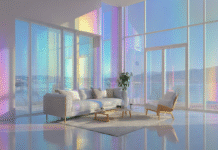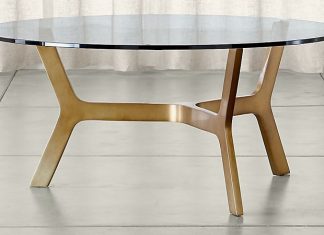Key Takeaways
- Any room is made more sophisticated and elegant by the addition of chandeliers.
- Understanding the different types of chandeliers can enhance your design choices.
- Proper placement and maintenance of chandeliers are crucial for both aesthetics and functionality.
Chandeliers enhance the aesthetic appeal of any space by bringing elegance and sophistication. Their intricate designs and sparkling lights create a focal point that elevates the ambiance. Whether in a grand entryway or a cozy dining room, chandeliers offer functional lighting and a touch of timeless charm.
History of Chandeliers
The chandelier, a symbol of elegance and wealth, has a long history that dates back to the Middle Ages. Initially used in medieval churches, chandeliers holding oil lamps provided essential light in large spaces. As candle-making technology improved, candles became the primary light source. By the 18th century, chandeliers were not just light sources but also works of art featuring intricate designs and delicate craftsmanship. They adorned royal courts and the homes of the wealthy, symbolizing opulence and grandeur.
Types of Chandeliers
There are many different types and designs of chandeliers, each giving a space a specific personality. Crystal chandeliers, known for their sparkling prisms, are famous for formal dining rooms and grand foyers, where they can catch and refract light beautifully. Modern chandeliers, often constructed from sleek metals and glass, fit perfectly in contemporary settings that favor minimalistic design. Wood and wrought iron chandeliers add charm and warmth for a more rustic or country-style home. For a wide variety, Visual Comfort chandelier options provide an extensive selection that can suit diverse tastes and spaces.
Choosing the Right Chandelier
Choosing the perfect chandelier for a room involves several considerations. Room size, ceiling height, and the existing decor are crucial factors. An oversized chandelier can overshadow a small room, making it feel cramped, while a chandelier that’s too small might not stand out in a larger space. Therefore, it’s essential to find a balance. Also, ensure that the chandelier complements the room’s style—whether it’s traditional, modern, or rustic—so that it blends seamlessly into the overall decor. Visual Comfort chandelier options offer many choices, making finding the ideal piece for any room easier.
Placement and Installation
Proper placement is pivotal to maximizing the chandelier’s impact. In dining rooms, the chandelier should be centered above the table, typically 30 to 36 inches above the tabletop, depending on the ceiling height. This positioning provides balanced illumination and clear sightlines. In foyers or entryways, ensure adequate overhead clearance to accommodate tall guests—usually at least 7 feet from the floor. Additionally, consider the electrical setup and ensure the chandelier is securely fastened. Professional installation might be required for larger, heavier fixtures.
Maintenance Tips
Maintaining a chandelier’s pristine condition requires regular cleaning and care. A feather duster can remove dust from the arms and crystals for light cleaning. For a deeper clean, a mixture of water and vinegar works wonders on metal and glass components. Remove each piece carefully and clean it individually if the design is intricate. Periodically check that all bulbs and fixtures are secure to avoid any accidents. Consider hiring professional cleaning services to maintain sparkle and structural integrity for incredibly delicate or large chandeliers.
Chandeliers in Modern Home Design
Incorporating chandeliers into modern design can elevate the ambiance of any room. According to Architectural Digest, designers are now blending vintage chandeliers with contemporary furnishings to create eclectic, standout interiors. This blend of old and new allows the chandelier to serve as a focal point or an artistic statement while complementing the room’s overall aesthetic. Using unconventional materials and innovative designs, modern chandeliers are not just lighting fixtures but also art pieces that add a unique flair to contemporary interiors.
Environmental Impact of Chandeliers
Understanding the environmental impact of chandeliers helps in making more sustainable choices. Traditional incandescent bulbs consume more energy, whereas LED bulbs are far more energy-efficient. According to Energy.gov, Moving to LED lighting may significantly reduce greenhouse gas emissions and energy use, improving the environment. Furthermore, choosing eco-friendly materials for the chandelier construction and supporting sustainable brands can make a positive difference. Not only is energy-efficient lighting beneficial to the environment, but it also lowers power costs.
Inspiration and Trends
Stay abreast of the latest trends and gather inspiration from design magazines and online galleries. Modern chandelier trends include mixing different metal finishes, using unconventional shapes, and incorporating intelligent lighting technology. These trends provide numerous possibilities to get creative and personalize your space. For instance, a chandelier with mixed metal finishes can add an industrial touch, while intelligent lighting technology lets you easily control the ambiance. Experimenting with these elements can create a personalized and unique chandelier that resonates with your style. Whether for a bold statement or a subtle touch, the latest trends in chandelier design offer endless possibilities for enhancing your home’s decor.












